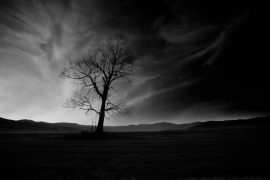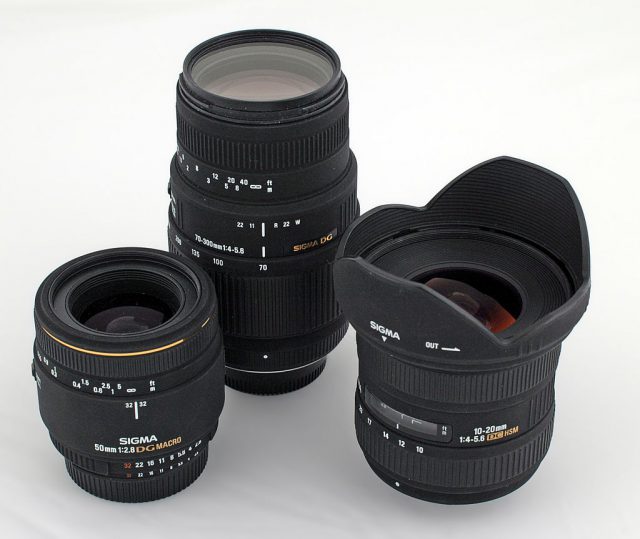Hello, photography lovers! If you love taking pictures of animals, you’ve come to the right place. When it comes to wildlife photography, the type of lens you use is very important. Today, we will talk about the different lenses you can use to capture amazing wildlife shots.
In this blog post, we will discuss the lens options that can help you take the stunning wildlife photos you’ve always wanted. We know that choosing the right lens can be confusing, but don’t worry, we’re here to make it easier for you.
The impact of lens selection on image quality
Choosing the right lens is crucial for capturing wildlife photos. The lens you use can greatly affect the quality of your images. When you’re out in nature trying to capture the perfect moment, having the right lens is key.
Wildlife can be hard to get close to without scaring them away, so using a longer focal length lens, like 300mm or 400mm, allows you to stay at a safe distance while still getting a close-up shot. This helps to minimize disturbance and results in sharper, more detailed photos.
The aperture is also important, especially in low-light conditions. A lens with a wide maximum aperture, like f/2.8, lets in more light, allowing for faster shutter speeds. This is important for freezing fast-moving wildlife and avoiding blurry photos.
Image stabilization is another important feature to consider. When you’re shooting handheld, even the tiniest movement can cause blurriness. Lenses with image stabilization technology compensate for these movements, ensuring that your photos are sharp and clear.

Photo by Depositphotos
Factors to Consider When Choosing a Wildlife Photography Lens
Choosing the right lens for your wildlife photography is an important task that needs careful thinking. There are many options to choose from, so it’s crucial to understand the main factors that will affect your decision. Let’s take a look at these important factors individually:
1- Focal Length and Its Role in Wildlife Photography
The most important thing to consider when choosing a lens for wildlife photography is the focal length. This determines how close you can get to your subject without getting too close. Longer focal lengths, like 200mm and above, are perfect for wildlife photography. They let you capture faraway subjects with lots of detail. This means you can take pictures of animals without bothering them or changing how they act.
On the other hand, wide-angle lenses are better for taking pictures of landscapes or when the animal is really close to you. But they don’t have the zoom power needed for most wildlife situations.
2- Aperture and Its Effects on Depth of Field and Low Light Performance
Aperture, often represented by an f-number (e.g., f/2.8, f/4, f/5.6), plays a significant role in wildlife photography. The aperture setting affects two crucial aspects: depth of field and low light performance.
A wider aperture (a lower f-number like f/2.8) allows more light into the lens, making it easier to capture images in low-light conditions, such as dawn or dusk.
Additionally, a wider aperture results in a shallower depth of field, which means that your subject will be in focus, while the background will have a pleasing blur or bokeh. This can make your wildlife subject stand out beautifully against a soft, out-of-focus background.
3- Image Stabilization for Steady Shots
Wildlife photography often requires capturing subjects in motion. To ensure sharp, blur-free images, image stabilization is a vital feature to consider. This technology minimizes the effects of hand tremors and camera shake, especially when using longer telephoto lenses, which can magnify the impact of any slight movements.
Steady shots are essential when you’re photographing birds in flight, fast-moving animals, or during challenging weather conditions. Many camera manufacturers offer lenses with built-in image stabilization to enhance your shooting experience.
4- Autofocus Motor
The autofocus motor in a lens can significantly impact your ability to capture moving subjects. When photographing wildlife, you’ll want a lens with a fast and accurate autofocus system. Look for lenses equipped with ultrasonic or silent wave motors, which provide quick and quiet focusing. This ensures that you can lock onto your subject swiftly and capture those split-second moments in the wild.
5- Lens Weight and Portability
Wildlife photography often involves long treks and extended hours in the field. The weight and portability of your lens are essential factors to consider, especially if you’ll be carrying it for extended periods. A heavy lens can quickly become a burden, affecting your mobility and stamina.
Some wildlife photographers prefer lightweight, compact lenses that are easier to handle during extended outdoor sessions. However, it’s important to strike a balance between weight and optical quality. Finding a lens that’s both portable and capable of delivering excellent image quality can be a game-changer.
6- Budget Considerations
Your budget is another critical factor when choosing a wildlife photography lens. Quality lenses come in a wide price range, and while it’s tempting to go for the most expensive option, it’s not always necessary. Consider your level of commitment to wildlife photography and your specific needs.
High-end lenses often offer exceptional optical quality and features but can be a substantial investment. However, there are many mid-range and budget-friendly options that provide excellent image quality and performance. Consider your long-term goals and how much you’re willing to invest in your passion for wildlife photography.
In conclusion, selecting the right lens for wildlife photography involves a thoughtful evaluation of these factors. Your choice will ultimately depend on your specific requirements, whether you’re an amateur looking to capture memorable wildlife moments or a seasoned photographer seeking the perfect shot.

Photo by Depositphotos
Prime vs. Zoom Lenses for Wildlife Photography
Picking the right lens for wildlife photography can be overwhelming. One important decision is whether to choose a prime lens or a zoom lens. Both have their own benefits, and the choice ultimately depends on your individual requirements and preferences. In this section, we will discuss the advantages and disadvantages of prime and zoom lenses for wildlife photography, so you can make a well-informed choice.
I- Advantages of Prime Lenses
-
Exceptional Image Quality:
Prime lenses are known for their outstanding optical quality. With a fixed focal length, they are designed for one specific field of view, which allows them to deliver razor-sharp images. This is especially valuable in wildlife photography when you want to capture every detail of your subject.
-
Wider Aperture:
Many prime lenses have wider maximum apertures, such as f/1.8 or f/2.8. This means they can let in more light, making them excellent for low-light conditions. The wider aperture also results in that beautiful background blur (bokeh), which can make your wildlife subject stand out against a dreamy, blurred background.
-
Lightweight and Compact:
Prime lenses are often smaller and lighter compared to zoom lenses of similar quality. This makes them more portable and easier to handle, particularly during long hikes or extended wildlife photography sessions.
-
Reduced Distortion and Aberration:
Prime lenses tend to have fewer optical aberrations and distortions than zoom lenses, ensuring your wildlife images are free from unwanted artifacts.
-
Simplicity:
With a prime lens, you have a fixed focal length, which can be a creative advantage. It forces you to think more about your composition and how you frame your subject. This can lead to more thoughtful and intentional photography.

II- Advantages of Zoom Lenses
-
Versatility:
Zoom lenses are incredibly versatile, offering a range of focal lengths in a single package. This flexibility allows you to adapt quickly to changing wildlife photography scenarios without the need to switch lenses.
-
Convenient for Distant Subjects:
In wildlife photography, animals can be far away, and you might not always have the luxury of getting closer. Zoom lenses, especially telephoto ones, bring distant subjects up close, making them ideal for capturing wildlife without disturbing them.
-
Framing Options:
Zoom lenses give you multiple framing options. You can go from a wide-angle view to a close-up shot without changing lenses. This convenience can be particularly helpful when you’re in the field and don’t want to miss a shot by switching lenses.
-
Image Stabilization:
Many zoom lenses come equipped with image stabilization technology, which is invaluable when shooting at longer focal lengths. It helps reduce the impact of camera shake and improves the chances of capturing sharp images.
-
Excellent for Beginners:
For those new to wildlife photography, zoom lenses provide an easier learning curve. They allow you to experiment with various focal lengths and learn which ones work best for your style.

Image by 10789997 from Pixabay
Which Type of Lens Is Best for Your Specific Needs
The choice between prime and zoom lenses for wildlife photography ultimately depends on your specific needs and shooting style. Here are some scenarios to help you decide:
-
Choose a Prime Lens If:
- You prioritize image quality above all else and are willing to work with a fixed focal length.
- You prefer a lightweight and portable setup for your wildlife adventures.
- You enjoy the creative challenge of framing your shots with a fixed focal length.
- You often shoot in low-light conditions and need a wide aperture for better results.
- You don’t mind investing in multiple prime lenses to cover various focal lengths.
-
Choose a Zoom Lens If:
- Versatility is essential for your wildlife photography, and you want the convenience of multiple focal lengths in one lens.
- You frequently encounter distant wildlife subjects and need the flexibility to zoom in.
- You’re still learning the ropes of wildlife photography and want an easier, less gear-intensive experience.
- Image stabilization is crucial for your shooting conditions, especially when working with longer focal lengths.
In many cases, experienced wildlife photographers choose to have both prime and zoom lenses in their kit. They use prime lenses when they have specific shots in mind that require exceptional image quality, and zoom lenses for the versatility and adaptability they offer. This combination allows photographers to be prepared for a wide range of scenarios in the dynamic world of wildlife photography.
The best wildlife photography lenses
I- For DSLR cameras
1- Sigma 150-600mm f/5-6.3 DG OS HSM Contemporary
The Sigma 150-600mm f/5-6.3 DG OS HSM lens offers a highly versatile range in a portable form factor. It belongs to the Contemporary-series telephoto zoom category and is known for its advanced optics and flexible handling.
The lens comes in different mountings to suit both Canon EF, and Nikon F cameras.
The lens incorporates one FLD element and three SLD elements to effectively reduce color fringing and chromatic aberrations across the entire zoom range. Furthermore, Super Multi-Coating is applied to minimize flare and ghosting, resulting in improved contrast and color accuracy, particularly in challenging lighting conditions.
In addition to its optical capabilities, this lens is equipped with a Hyper Sonic Motor, which enables fast and silent autofocus performance. It also allows for full-time manual focus override, giving users greater control over their shots.
To further enhance image stability, an Optical Stabilizer is integrated to reduce the effects of camera shake, resulting in sharper handheld images. Moreover, a removable and rotating tripod collar is included, making it suitable for use with tripods or monopods.
2- Tamron SP 150-600mm f/5-6.3 Di VC USD G2

The Tamron SP 150-600mm f/5-6.3 Di VC USD G2 is a versatile lens, the lens comes in different mountings to suit both Canon EF, and Nikon F cameras.
It features a wide focal range, and three LD glass elements to reduce chromatic aberrations and has eBAND and BBAR coatings to minimize flare.
This G2 version includes a FLEX ZOOM LOCK for secure zoom positioning, Vibration Compensation (VC) for image stabilization, and a ring-type Ultrasonic Silent Drive (USD) autofocus motor for fast, precise focusing. It’s built for outdoor use with weather-resistant construction and a fluorine-coated front element.
Its durable metal design includes textured focus and zoom rings, and it comes with a removable tripod collar for tripod or monopod shooting.
3- Canon EF 100-400mm f/4.5-5.6L IS II USM
The Canon EF 100-400mm f/4.5-5.6L IS II USM Lens is a high-quality telephoto zoom lens designed for full-frame EOS DSLRs. It incorporates advanced optics, including one fluorite element and one Super UD element, resulting in exceptional image quality.
Air Sphere Coating reduces lens flare and ghosting, enhancing contrast. With a four-stop Image Stabilizer, it minimizes camera shake, adjustable for various shooting styles. The lens features a rotation-type zoom ring and internal focusing for quick, intuitive handling, ideal for sports and wildlife photography.
It’s built to last, with a weather-resistant barrel and fluorine coatings to protect against smudges. A dedicated tension ring allows zoom torque adjustment, and a tripod collar can be attached or detached while mounted to the camera. The lens hood permits easy control over specialty filters even when in use. Ideal for serious photographers seeking top-tier performance and durability.
4- Nikon AF-S 200-500mm f/5.6E ED VR
Nikon’s AF-S NIKKOR 200-500mm f/5.6E ED VR Lens offers a versatile zoom range and a constant f/5.6 aperture for consistent performance. Its optical design includes three extra-low dispersion glass elements, reducing chromatic aberrations and enhancing image quality. With a Super super-integrated coating, it minimizes flare and ghosting, improving contrast.
The lens features a Silent Wave Motor AF system, providing fast and quiet focusing, ideal for photography and videography. Manual focus override is easily accessible for quick adjustments, perfect for fast-paced and challenging scenarios. Vibration Reduction (VR) technology compensates for camera shake, offering up to 4.5 stops of stability for sharper shots.
Additionally, the electromagnetic aperture mechanism ensures precise exposure control, especially beneficial for high-speed continuous shooting. This lens is a great choice for photographers seeking a broad zoom range and excellent image quality.
5- Canon EF 400mm f/4 DO is II USM Lens
The Canon EF 400mm f/4 DO IS II USM is an exceptional super telephoto lens known for its innovative optical design and advanced image stabilization. Notably, it’s lightweight and compact. With gapless dual-layer diffractive optics, it offers a smaller 400mm option with improved chromatic and spherical aberration correction. Aspherical and UD elements further reduce distortions, while a Sub-sub-wavelength coating enhances clarity and contrast.
Its four-stop-effective Image Stabilizer minimizes camera shake and is adaptable to various shooting styles. Ideal for sports and wildlife photography, it’s also versatile for other applications.
Built for durability, the weather-resistant barrel and fluorine coatings protect against smudges. Features like AF stop buttons, full-time manual focus override and Power Focus mode make focusing easier. This lens is an excellent choice for photographers seeking top-tier performance in a lightweight package.
6- Nikon AF-S 500mm f/5.6E PF ED VR
The Nikon AF-S NIKKOR 500mm f/5.6E PF ED VR defies the stereotype of large and bulky super telephoto lenses. This 500mm prime lens is designed for handheld use, thanks to a unique Phase Fresnel element that significantly reduces its size and weight. It’s paired with three extra-low dispersion elements to minimize aberrations, delivering exceptional clarity and color accuracy.
The lens also features Nano Crystal and Super Integrated Coatings to combat flare and ghosting, plus a protective fluorine coating for durability.
With a Silent Wave Motor AF system, it offers fast and nearly silent autofocus for both photography and video. Manual focus override is easily accessible. Vibration Reduction (VR) image stabilization compensates for camera shake, ensuring sharp handheld shots.
Additionally, the electromagnetic aperture mechanism enhances exposure control, especially during high-speed continuous shooting. This lens redefines super telephoto possibilities in a lightweight and powerful package.

II- For Mirrorless cameras
7- Canon RF 100-500mm F4.5-7.1 L IS USM Lens.
The Canon RF 100-500mm f/4.5-7.1 L IS USM is a versatile telephoto lens with a compact, portable design. Its modest aperture contributes to its sleek form, perfect for handheld use. It features optical image stabilization for up to five stops of shake reduction, especially in challenging lighting conditions.
The lens’s advanced optics incorporate Super UD and UD elements to minimize chromatic aberrations and color fringing, ensuring exceptional image clarity and color accuracy.
The Dual Nano USM focus system provides fast and silent autofocus, with full-time manual focus override. A unique Control Ring allows direct exposure adjustments from the lens. The zoom ring offers torque adjustment for a customized feel.
Weather-sealed, this lens is built to withstand the elements, with a fluorine coating on the front and rear elements for added protection. Ideal for a variety of photographic needs.
8- Canon RF 100-400mm F5.6-8 IS USM Lens.
The Canon RF 100-400mm f/5.6-8 IS USM is a versatile telephoto zoom lens that offers a compact and portable design. It is particularly well-suited for capturing wildlife, sports, and travel photography.
Despite its lightweight construction, this lens provides an extended range, allowing for super-telephoto reach. Additionally, it features Coordinated IS technology, which effectively reduces camera shake by up to 6 stops, and Nano USM AF for enhanced focusing speed.
In terms of optical performance, this lens incorporates specialized elements that effectively control various aberrations, resulting in images with exceptional sharpness and clarity throughout the entire zoom range.
Furthermore, it offers close-focusing capabilities, with a maximum magnification of 0.41x at the 400mm focal length, enabling close-up photography of subjects as small as a credit card.
9- Nikon Z 100-400mm f/4.5-5.6 VR S
The Nikon Z 100-400mm f/4.5-5.6 VR S lens is tailor-made for Nikon Z-mount mirrorless cameras, meeting professional-grade demands. With a focal length range of 100-400mm, it’s versatile for wildlife, sports, action, and portraits.
Its advanced optical design, featuring two Super ED and six ED glass elements, effectively combats chromatic aberrations. Nano Crystal and ARNEO coatings minimize ghosting and flare.
The lens incorporates Nikon’s latest autofocus system for fast, precise focusing. It also offers built-in image stabilization, providing 5.5 stops of compensation for sharp images, even in low light or when shooting handheld.
Despite its super telephoto capabilities, the lens remains lightweight and compact, making it easy to carry and use.
In summary, the Nikon Z 100-400mm f/4.5-5.6 VR S is a versatile, high-performance super-telephoto lens with professional-grade optical quality, efficient autofocus, image stabilization, weather-sealing, and a portable design. It’s an exceptional choice for photographers who need a top-tier super-telephoto lens for various subjects.
10- Nikon NIKKOR Z 400mm f/4.5 VR S
The Nikon NIKKOR Z 400mm f/4.5 VR S is a super-telephoto prime lens designed for Nikon Z-mount mirrorless cameras. Remarkably, it’s the smallest and lightest 400mm lens ever from Nikon, offering portability and user-friendliness.
This lens is feature-packed, making it versatile for various applications. It boasts a bright f/4.5 maximum aperture for low-light shooting and beautiful bokeh.
As part of Nikon’s S-Line optics, it ensures exceptional optical quality and build. With 5.5-stop image stabilization, it minimizes camera shake, even in low light, and the latest autofocus system delivers speed and accuracy for tracking moving subjects.
The lens is weather-sealed for dust and moisture resistance, suitable for all conditions. It’s a go-to choice for wildlife, sports, portrait, and landscape photographers, thanks to its 400mm focal length and versatility. In summary, the Nikon NIKKOR Z 400mm f/4.5 VR S is a powerful, portable, and versatile super-telephoto lens for photographers of all levels.
Conclusion
Choosing the right lens for wildlife photography is important for your photography journey. It doesn’t matter if you’re a pro or a beginner, finding the right lens is like finding a key to unlock the beauty of nature.
You need to consider factors like focal length, aperture, image stabilization, and budget. There’s no one-size-fits-all answer, so choose a lens that aligns with your specific needs, style, and the type of wildlife photography you’re pursuing.
You can choose between prime and zoom lenses, or even have both in your toolkit. The versatility of zoom lenses and the exceptional image quality of prime lenses can make your wildlife photography outstanding.
Ultimately, the right lens is the one that helps you capture the moments that take your breath away and tell the incredible stories of the wild. So, go on your wildlife photography adventures with confidence, knowing that you’ve made an informed choice that will bring you closer to nature’s wonders.
Can’t afford to buy a new lens?
Sometimes, buying a new Lens can be very expensive for many people. However, Keh is a great option to get a used one at a reasonable price. Read the full review here.
Related posts
Wildlife Photography Tips And Techniques
Bird Photography – Step By Step Guide
Best Nikon Camera For Wildlife Photography
Optics On Safari – Best Canon Lenses For Wildlife Photography
10 Best Birding Cameras- Find Your Perfect Match
Best Canon Lenses For Bird Photography
Teleconverters: Extend Your Focal Length Economically
Thanks for reading, I hope you enjoyed the article, if you have any questions just drop them below & I will be happy to answer you.
The featured Image by 3342 from Pixabay
If you enjoy the site, don’t forget to subscribe, we will only inform you when a new article is posted.




















Such a thorough and comprehensive article.
I highly commend you for mentioning the very important point of not bothering animals or changing how they act. When it comes to wildlife photography, capturing the natural state of an animal makes a huge difference.
Detail and quality are also just as important, so the focal length of the lens is indeed the key element.
Thank you Amin.
I really appreciate your kind words and how you recognize the importance of wildlife photography ethics. It’s super important to prioritize the well-being of animals and make sure we preserve their natural behavior. And you know what? Detail and quality are absolutely key in wildlife photography. Choosing the right focal length lens is a big part of getting those amazing shots. If you ever have more questions or need more tips down the road, don’t hesitate to reach out. Keep shooting and thanks for your awesome comment!
Your article on choosing the best lens for wildlife photography is a treasure trove of insights! I appreciate how you break down the considerations based on the type of wildlife and shooting conditions. It got me thinking, have you personally experimented with different lenses for specific wildlife scenarios? I’d love to hear about any standout experiences you’ve had.
Your emphasis on image stabilization is crucial. I’ve encountered situations where a shaky hand compromised an otherwise perfect shot. Do you have any additional tips for stabilizing shots in the field? Also, your recommendation to rent before buying is a wise one. It allows photographers to truly test a lens in their specific shooting environment. Thanks for sharing your expertise – it’s incredibly valuable for wildlife enthusiasts like myself!
I’m thrilled that you found the article insightful! Yes, I’ve experimented with various lenses for wildlife scenarios, and one standout experience was using a super-telephoto lens (600mm) for capturing distant birds in flight – the level of detail and reach was astounding.
For stabilizing shots, using a sturdy tripod or monopod can greatly help. Image stabilization in the lens or camera is essential, but techniques like proper posture, bracing against a solid object, and using burst mode can further improve stability in the field.
Renting before buying is a smart way to ensure a lens fits your specific needs. I’m here for any more tips or questions you may have. Happy wildlife photography, and thank you for your kind words!